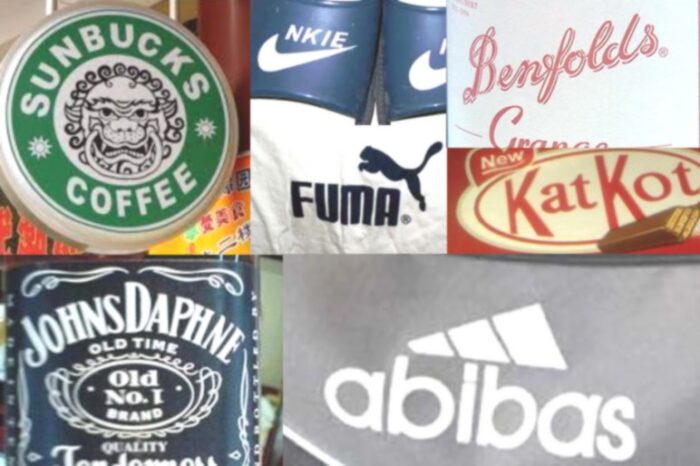16 Dec How to Prevent Trademark Genericide and Protect Your Brand
Trade marks are a powerful tool for every business owner, but can lose their value over time if not effectively used and used consistently. What exactly is “trademark genericide”, and how can you protect your brand from losing value?
Frisbee. Uggs. Trampoline. Laundromat. Aspirin. Band-Aid. Google. These are just a few examples of the many brands that were once distinctive trade marks, but have evolved into generic terms since or are at risk of becoming one.
What is Trademark Genericide?
Many business owners dream of having their brand grow to such a reputable state, that effectively no marketing is required to have consumers affiliate their product or service with their trade mark. Legally, however, such reputation can put your brand value at a risk, which may come with a high cost.
The legal basis for trade mark genericide can be found in Section 24 of the Trade Marks Act 1995 (Cth). This section grants Courts the ability to cease trade mark rights if the mark has become a generic term for the goods and/or services it applies to.
“This section applies if a registered trade mark consists of, or contains, a sign that, after the date of registration of the trade mark, becomes generally accepted within the relevant trade as the sign that describes or is the name of an article, substance or service“
Essentially, this means that any business owner risks losing their trademark rights when their trade mark has come to define a product or service, instead of being used as a badge of origin. The brand has then lost its value as a trade mark due to its widespread use and recognition.
Once a Court has declared a trade mark a generic term under section 24 of the Trade Marks Act, other traders are free to try registering their own brand containing the term. Those brands will likely need to contain other distinctive elements to be granted registered rights, as generic words only are generally not able to achieve registered status in Australia.
So, how do you prevent your brand from losing its distinctiveness?
Protecting your brand from Trademark Genericide
The following tips can help your business successfully maintain your trade mark reputation without crossing that fine line to trade mark genericness:
- Claim your brand: always use the ™ or the ® symbol in connection with your trade mark to have consumers identify the term as a brand instead of a generic sign. Keen to learn more about the use of the ™ and ® symbols? Click here.
- It’s not a noun: use your brand as an adjective in your marketing campaign, along with a descriptor. This effectively reminders consumers that your brand is a bade of origin, and inherently capable of distinguishing the product of service from those of others. For example, “Google” uses “Google search” and Band-Aid” uses “Band-Aid adhesive bandages”. Never promote your trade mark descriptively. For example, Google does not encourage using the phrase “Google it”.
- Maintain in control: Stay in total control of your trade mark rights through licences and strict usage requirements.
- Enforce your rights: have you become aware of another trading using your trade mark? It’s vital that you act immediately to put a stop to their conduct, so your brand does not risk dilution of its reputation with consumers. If you allow the conduct, after a period of time the doctrine of laches will kick in and effectively you are taken to be acquiescing to the conduct. Trade mark infringement is a serious matter and should be acted upon as a matter of urgency.
- Don’t use it descriptively: Protect your brand value by educating and reminding consumers how to properly use your distinctive brand. For example, Google will not market their services as “just Google it” but rather as “Any questions? Use Google search for the best results”.
Key Takeaways
It may sound like a dream to achieve such widespread recognition of your brand that active marketing is no longer required, but this may lead to your brand losing its value and becoming a generic term.
Your registered trade mark could then risk removal from the Trade Mark Register as it’s no longer capable to act as a badge of origin for your business and then think slippery slope and floodgates being open for others to have ‘carte blanche‘.
You can increase and maintain your brand distinctiveness by using effecting marketing tools, constantly prompting consumers that your brand relates to your goods and/or services only, and not those of other traders. At the same time, it’s vital to actually control the use of your trade mark and ensure it’s only used by you and your licensees, by enforcing your registered trade mark rights at all times.
Helpful Tips
- We also offer a watching service if you want to make sure you are aware if any competitors start using your band in the market or apply for trade marks.
- Find out more about conducting a free trade mark search here.
Need any help protecting or enforcing your trade mark? Contact our experienced team of trade mark lawyers, attorneys and specialists today on 1800 820 083 or by filling out the form on this page.
Contact Us
Related Articles
- 01 February, 2024
- 18 January, 2024

Ian Aldridge is the Founder and Principal Lawyer Director at Progressive Legal. He has over 15 years experience in advising businesses in Australia and the UK. After practising in commercial litigation for 12 years in major Australian and International Law Firms, he decided to set up a NewLaw law firm in Australia and assist growing Australian businesses. Since then, he has advised over 2,500 small businesses over the past 6 years alone in relation to Intellectual Property Law, Commercial, Dispute Resolution, Workplace and Privacy Law. He has strived to build a law firm that takes a different approach to providing legal services. A truly client-focused law firm, Ian has built Progressive Legal that strives to deliver on predictable costs, excellent communication and care for his clients. As a legal pioneer, Ian has truly changed the way legal services are being provided in Australia, by building Legal Shield™, a legal subscription to obtain tailored legal documents and advice in a front-loaded retainer package, a world-first. He has a double degree in Law (Hons) and Economics (with a marketing major). He was admitted to the Supreme Court of NSW in 2005.




